After creating my last resource guide to working remotely from a van, I figured it was time to share some more of the things I’ve learned while living on the road the last two years.
One topic I would consider myself a bit of an expert on is vanlifing with a dog.
Before we jump into the tips, I figured I should introduce the queen pup herself, Dakota. She’s an 8-year-old Ridgeback mix (probably?) and we’ve been together since she was 8 weeks old. She’s very tall and weighs in at 80 pounds, so she’s certainly not some cute van accessory. She essentially takes the same space as another human. She’s athletic, adventurous, and the best vanlife companion ever created.
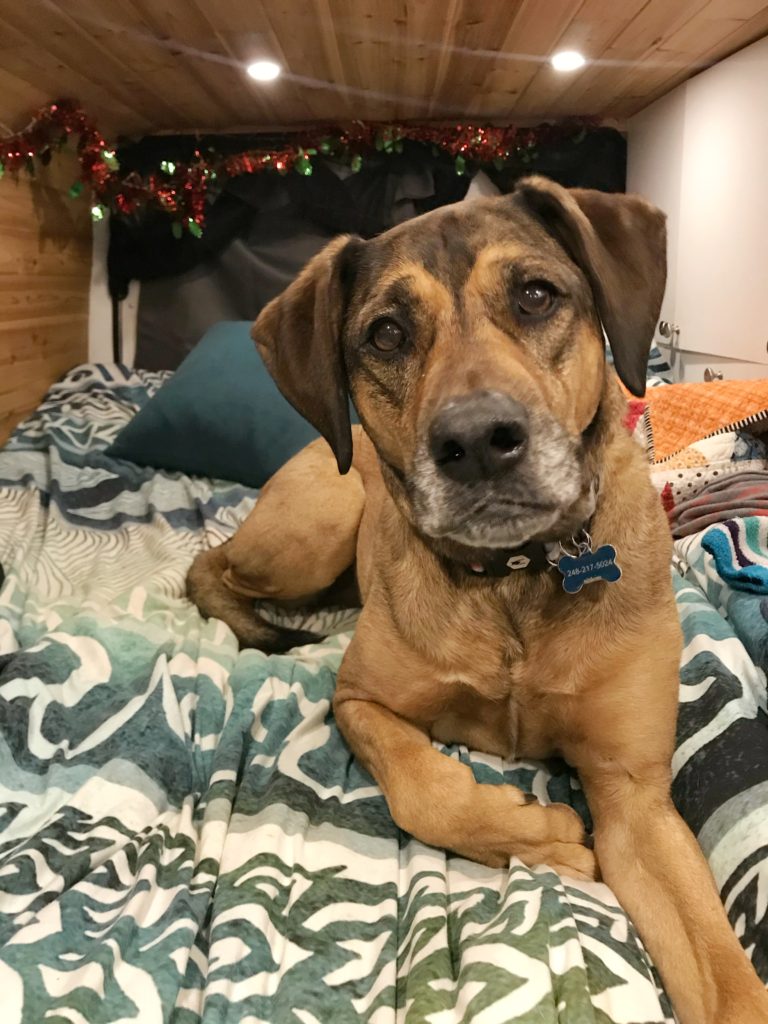
Top Ten Tips for Living Vanlife with a Dog
1. Equip the van for your dog
Whether you’re converting your own or finding one that’s ready to move into, consider how your dog will fit in your home on wheels.
I built my own van and made some decisions about my build specifically for my dog. My bed is lofted above my mountain bike and I not only had to make sure that I had enough space to sit up but that my tall dog could stand up on the bed since that’s where she’d be sleeping.
Then I had to find a way for her to get up and down off this tall bed. My refrigerator is enclosed in a bench and that is what we both use to get up and down from the bed.
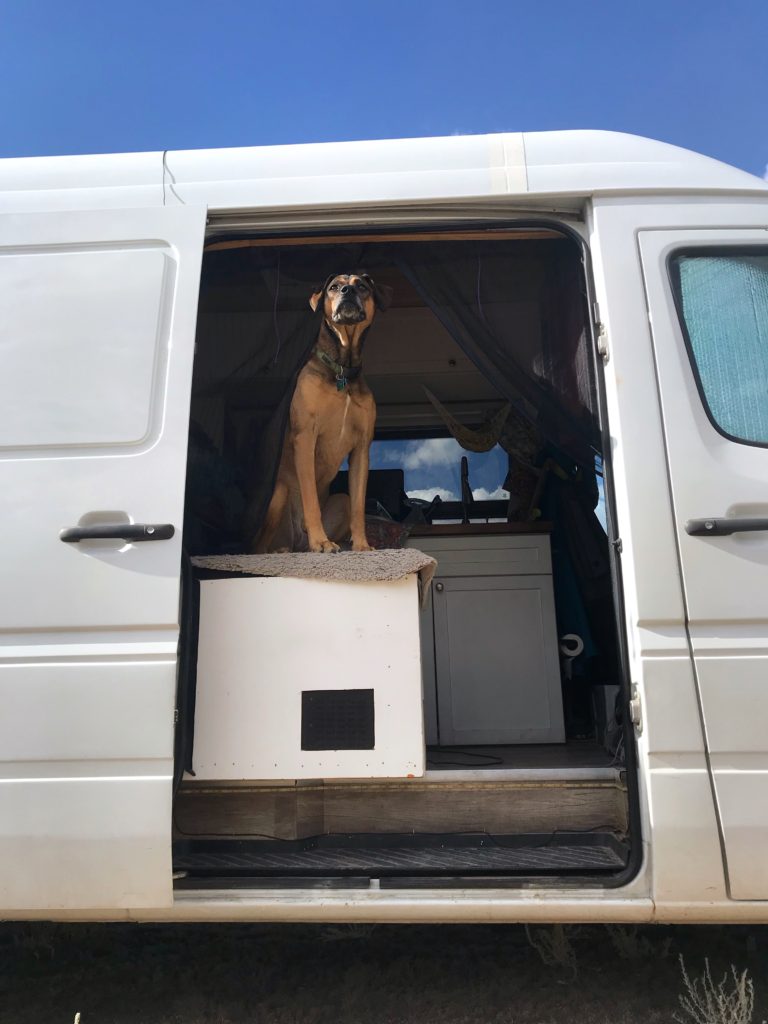
If your dog won’t be sleeping with you in bed, you’ll have to find a spot for them to sleep. Is this a spot where they’ll be comfortable and what will the temperatures be like in this part of the van?
When Dakota and I moved into the van, she was 6 years old and well-trained. If we had started vanlife when she was younger though, it would have looked a lot different!
I’m a big supporter of crate training and Dakota hung out in her crate while I was at work until she was 5 years old. In the few times I attempted to let her roam freely, she’d get into the garbage or pull food off the countertops or destroy shoes.
Luckily, she has mostly grown out of those behaviors and can be trusted in the van alone these days. If I were to get a puppy again though, I’d probably have to find a way to build a crate into the van.
There will be times when you need to leave your dog in the van alone (grocery shopping, going out to eat, visiting trails that aren’t dog-friendly) so think about how your dog will manage this. Are they likely to wait quietly, out of sight, or will they bark out the windows at everyone passing by?
Dakota makes this easy for me by sleeping quietly while I’m gone (she has never been a barker) so she doesn’t draw attention to herself or the van. Most people aren’t this lucky though.
I know some friends will crate their dogs while they’re away and others can manage by covering the windows so the dog has nothing to bark at.
It’s also important to consider where your dog will ride while you’re driving. Back when I had a Subaru, Dakota sat in the backseat, but my van doesn’t have a backseat. She tried sitting in the front seat for the first few trips but her large size made it difficult for her to get comfortable, and honestly, it wasn’t a safe place for her.
Now she lays on the bed while we move. She’s comfortable back there, I don’t have the distraction of a dog moving around, and when we’ve had to come to a sudden stop, she doesn’t get thrown around at all.
It can be overwhelming to figure out everything your dog might need in a van. Renting a van for a week or taking road trips in your current vehicle can help you start to identify the things you might not have thought of before.
My last, best piece of advice for getting your van ready for a dog is to purchase a waterproof mattress cover. As much as I don’t love having a waterproof mattress cover because they have a tendency to make you sweat at night, it has saved my mattress countless times. You never know when your dog will get sick and access to laundry is never guaranteed. Being able to strip my sheets and throw down a sleeping bag on a dry mattress has made dealing with a sick dog so much easier.
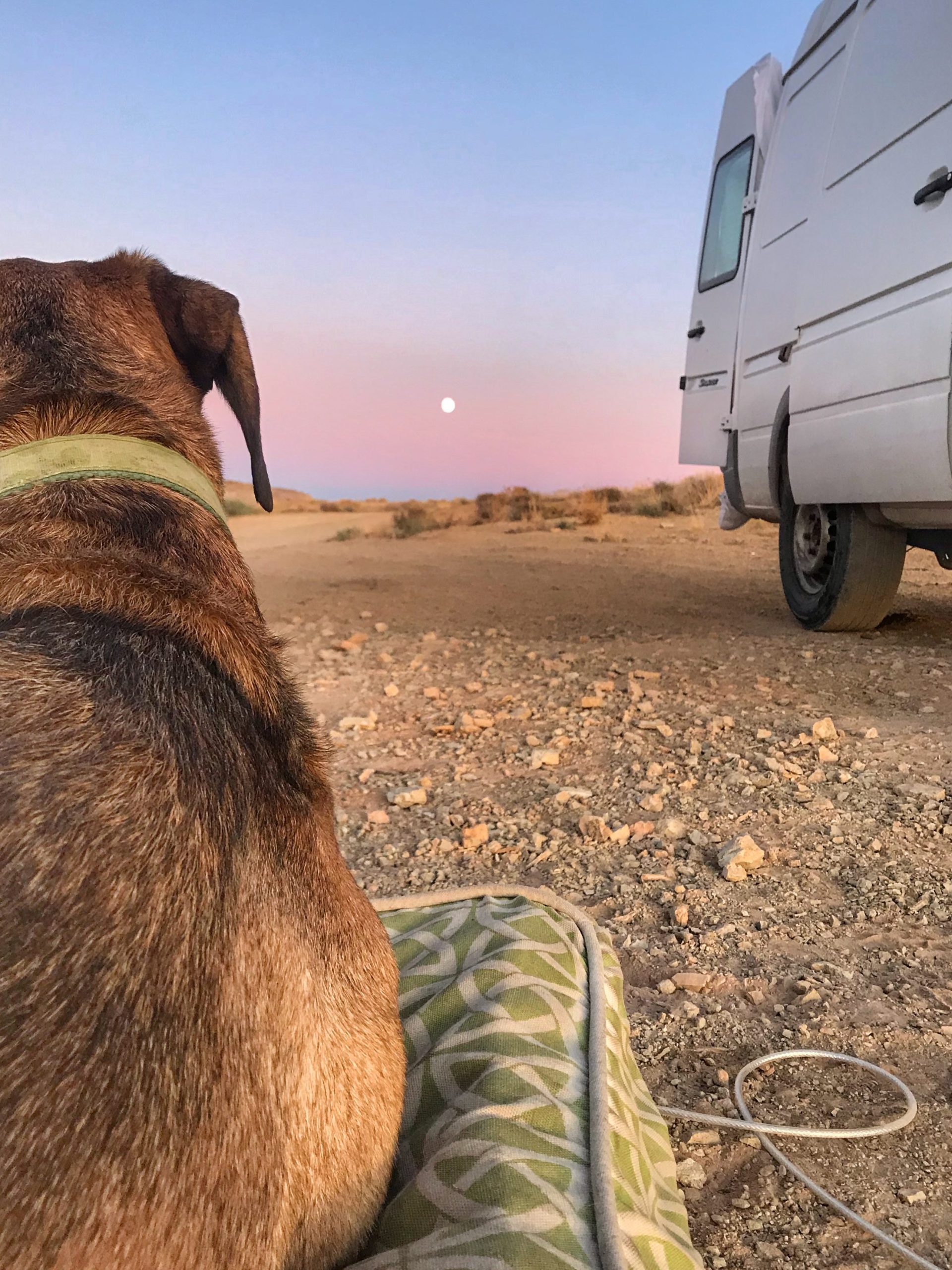
2. Give them time to adjust
Dakota has always loved car rides. This fact, unfortunately, didn’t translate to vanlife.
We had a terribly rough start. The van was loud and I took her on a long road trip before it was built, ensuring that her uneasiness of the van grew into a full-blown fear.
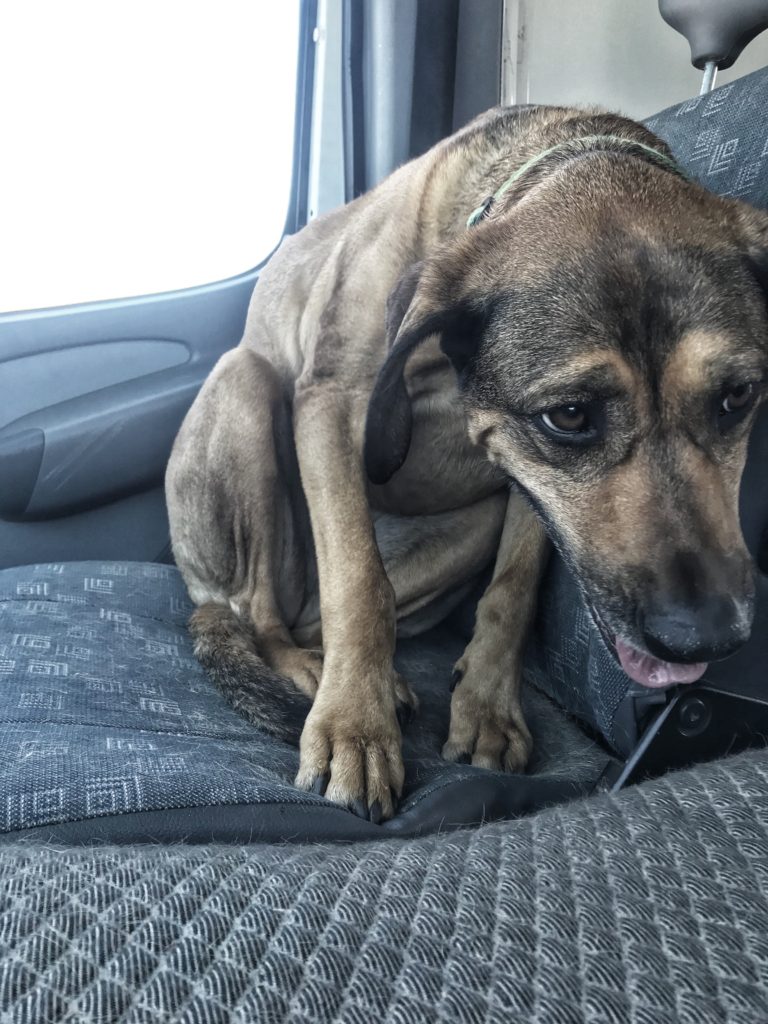
For months, she wouldn’t get into the van without me dragging her against her will and would leave me a nice poo present inside during every drive (the van literally scared the sh*t out of her).
I’m telling you this because your dog might not like vanlife. I know it seems like the best life ever for a dog, and Instagram has us believing that vanlife and dogs go together seamlessly, but not every dog can handle it.
I didn’t expect that Dakota would struggle to adjust to this lifestyle. Her love of car rides and the time we spent camping, hiking, etc. was the perfect combination for making this our life, but I was wrong.
I worked with my vet, tried lots of positive reinforcement, and even tried medicating her. It used up every ounce of my patience and simultaneously broke my heart.
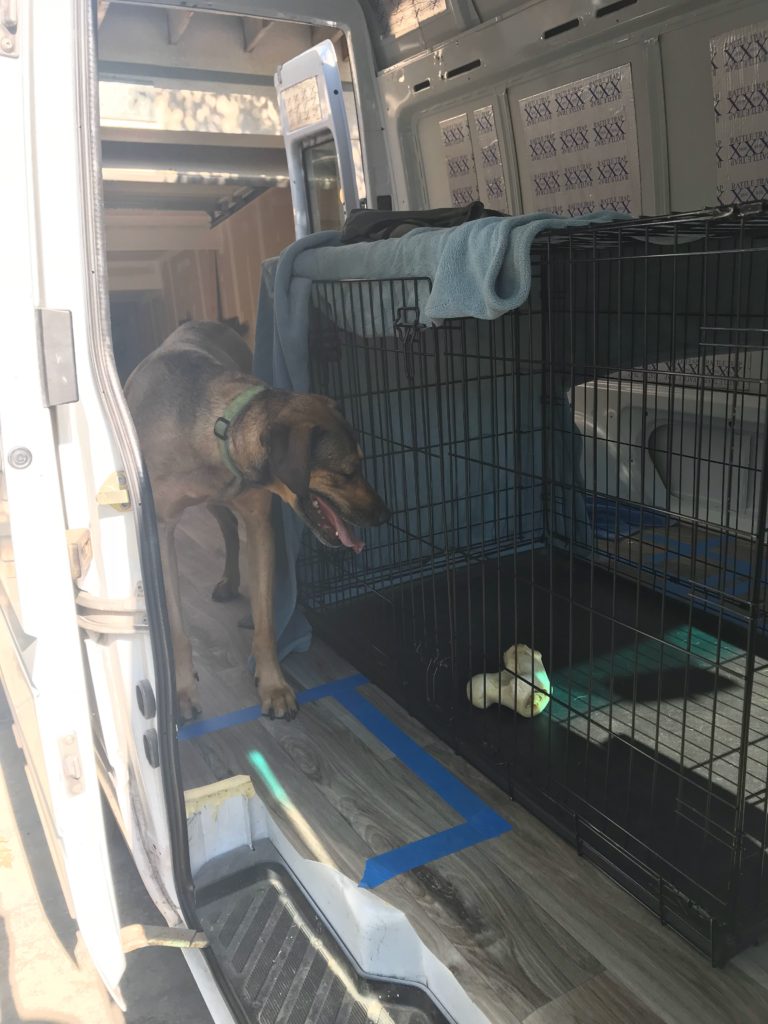
While I wish I had a magic cure for a dog who doesn’t like vanlife, I don’t. We had been living on the road for two weeks (after 4 months of van building and weekend van trips), I was still physically forcing her into the van, and she was still trembling to her core each time we drove. Then one day, it was like she realized this was it for us, and she had no choice but to accept it. I don’t know what I would have done if she never adjusted, but I had all the hope in the world that she would eventually learn to love it. Luckily, she did.
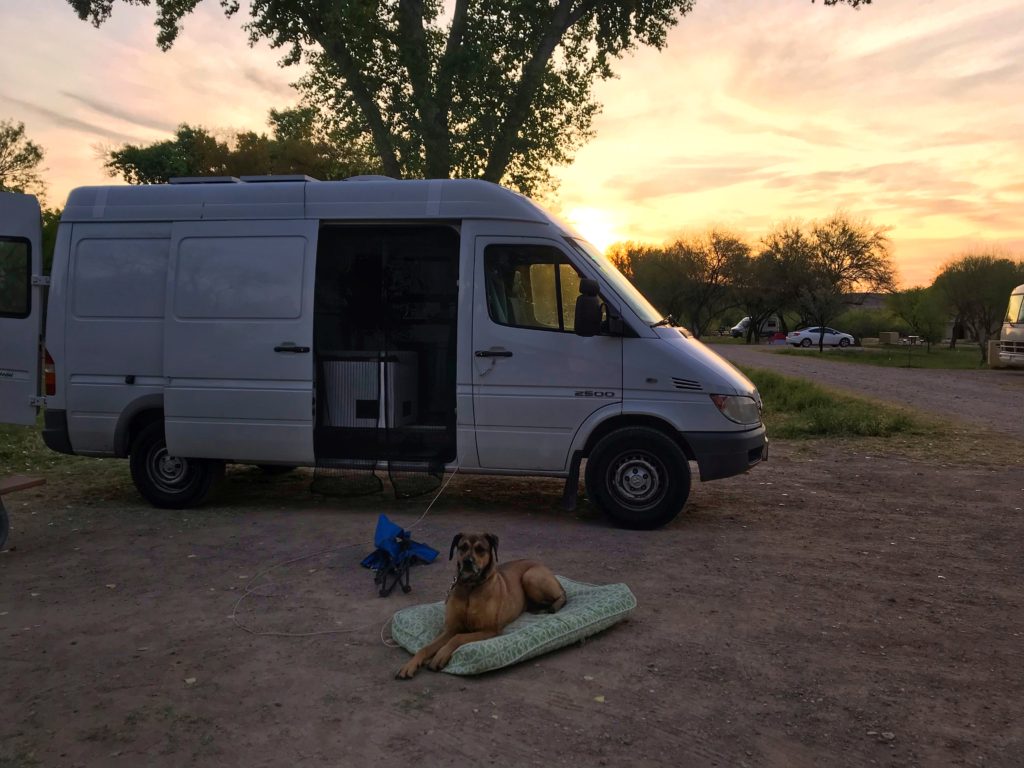
3. The right gear can made dog adventures easier
There are many different ways to “vanlife,” but my version involves a ton of outdoor adventures. Dakota lives for these as much as I do, and so just as I have a ton of outdoor gear, she does too.
Gear isn’t always necessary, but it can sure make certain adventures easier. You can find Dakota’s gear list here.
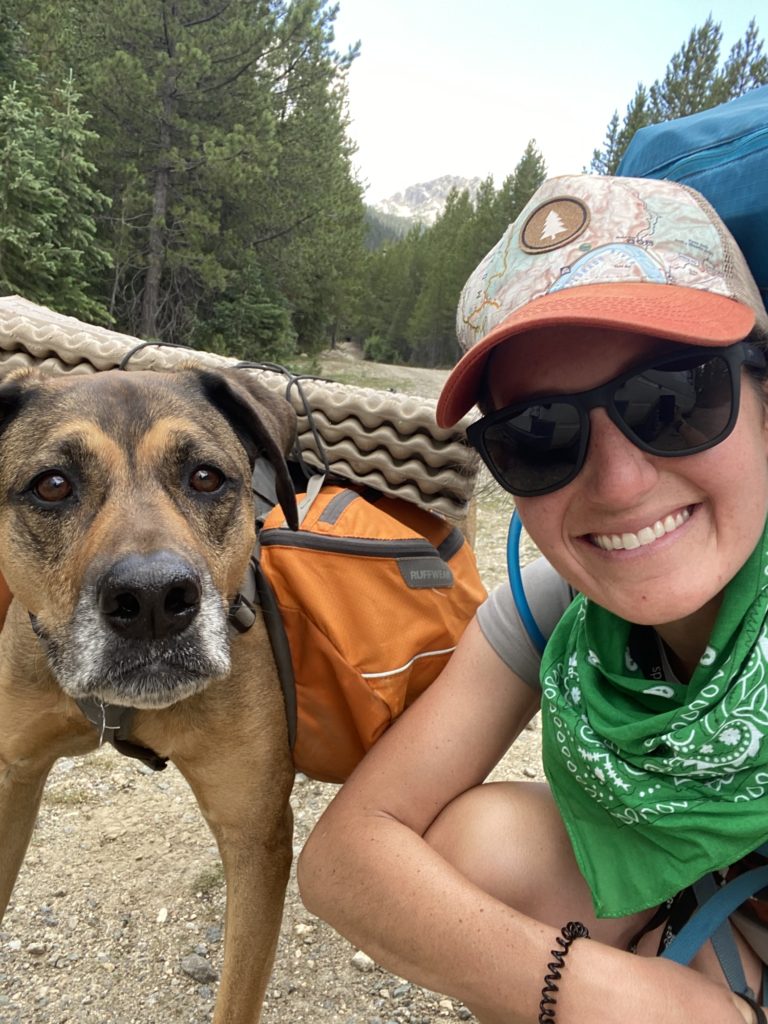
4. Prepare for the inevitable vet visit
Finding care on the road is something I wish I didn’t know so much about, but Dakota has had quite the health journey over the last two years.
I keep all of Dakota’s health records in the van with me so that no matter where I’m at or what time of day it is, I can provide the vet with all of her past records. Your current vet should be able to print your records for you, or even better, make you an electronic copy.
We’ve had our share of after-hours emergency care, so being able to provide any vet with the results from previous blood tests or the name of an antibiotic has proved to be extremely helpful.

If there’s a place that you claim as your “home base” or a spot that you return to a few times a year, it’s great to establish care with a vet there for routine things like vaccinations.
Then as I’m driving to a new town, I often make a mental note of where the nearby emergency vet is, just in case. It’s also important to understand that many small towns do not have vets with after-hours care and the closest emergency vet might be a few hours away.
5. Get ready for hot weather
Summer is the most challenging season for vanlife with a dog. Heatstroke is a serious health threat for your pup and living in a vehicle makes it a lot harder.
If you’re in the process of building your van, consider heat management in your design. Good insulation, fewer windows, and strategic fans all make for a cooler van in the summer.
Keep in mind that heat rises, so if your dog hangs out in a lofted space (like my dog does), make sure they get enough of a breeze up there to keep cool.
Window coverings will be your saving grace. I use Reflectix that I’ve cut to fit all my windows and magnetic clips to keep them in place. Many vanlifers will cover theirs with fabric, but I’m really simple and have always left mine silver.
Not only will these window covers keep your van cooler, but they will keep nosy strangers from seeing your dog. It’s a huge fear of mine that someone might see Dakota inside the van on a warm day and break a window to “save her,” without realizing that my van is built to stay much cooler than a regular vehicle.
I’ve seen some friends leave notes in their windows, informing concerned strangers that the inside vehicle temperature is not dangerous, and leaving their phone number in an effort to prevent the cops being called.
If you have a dog that barks or that occupies the front seat when you leave, you’ll need to think about how to keep your van and dog “stealthy” on warm days when you’re away. You can also plan to do any errand running once the sun goes down to help avoid this situation.
I make a lot of location decisions around summer temperatures, which is why we’ve spent the last two summers in Colorado above 9,000ft where it’s cooler. I get pretty miserable in temperatures over 80 degrees, so we do our best to avoid that.

When we have been in warmer climates and I’ve had to leave Dakota in the van, I set up the van (window covers, fans on, etc.) and sit inside with her for about 20 minutes. At the end of the 20 minutes, if I’m uncomfortable, then it’s too hot to leave her. Her safety is my priority, so putting her at risk is never worth it.
6. Also, be ready for cold weather
Cold temperatures have always been easier for Dakota than warm temperatures. For our first year on the road, we didn’t have a heater and we survived cold weather with layers and blankets. She is built for handling a wide range of temperatures and doesn’t get too hot or cold easily, but most dogs are more sensitive to one or the other.

Now we have a heater, which has made our winter travels so much more enjoyable. Before the heater though, Dakota would be bundled in her coat to keep her warm. When she’s in the van, she’s always on the bed, so she easily stays warm by snuggling on the blankets.
If you’re roughing it without a heater and staying in cold temperatures, consider putting water in a pot on the stove before bed so that you can melt it for your dog to drink in the morning when the rest of the water is likely frozen!
If you’re building your van for chasing powder, you’ll want to make sure it’s well-insulated, has some form of heater, and that wherever your dog sleeps is going to be warm enough. The floor is always the coldest part of the van and may not be a safe place for your dog to spend winter nights.

One other thing to consider while winter vanlifing with your dog is that they’ll track in a lot of mud and snow. When choosing flooring for your van, find something durable and waterproof, and always keep a “dog towel” near the door. Your cute van rug might not survive winter with a dog!
7. Keeping your space clean with a dog
One thing I get asked a lot about living with a dog in my van is how I keep my van clean.
The truth is, I don’t keep it clean!
Despite having short fur, Dakota sheds an insane amount. Her fur is light and dark and shows up on every surface. I sweep a few times a day, but it’s a lost cause.
I keep a towel near the door to wipe wet or muddy paws, and besides that, I just embrace the dog mess. If you’re a neat freak, I wouldn’t recommend vanlife with a dog.
8. A tired dog is a good dog
This saying applies to all dogs in all situations but is imperative for vanlife.
Living in a van means that your dog is now living in a very tiny space. If we’re inside all day, my dog might not take more than a few steps for a whole day. I have to make sure that she’s getting the exercise and brain stimulation that she needs to be happy, healthy, and tired.
When we’ve had long travel days and she’s had minimal exercise, she’ll get herself into trouble. Even at almost 9 years old, she’s been known to destroy something I’ve left out or start scavenging for things she shouldn’t eat around camp if she has too much pent-up energy.
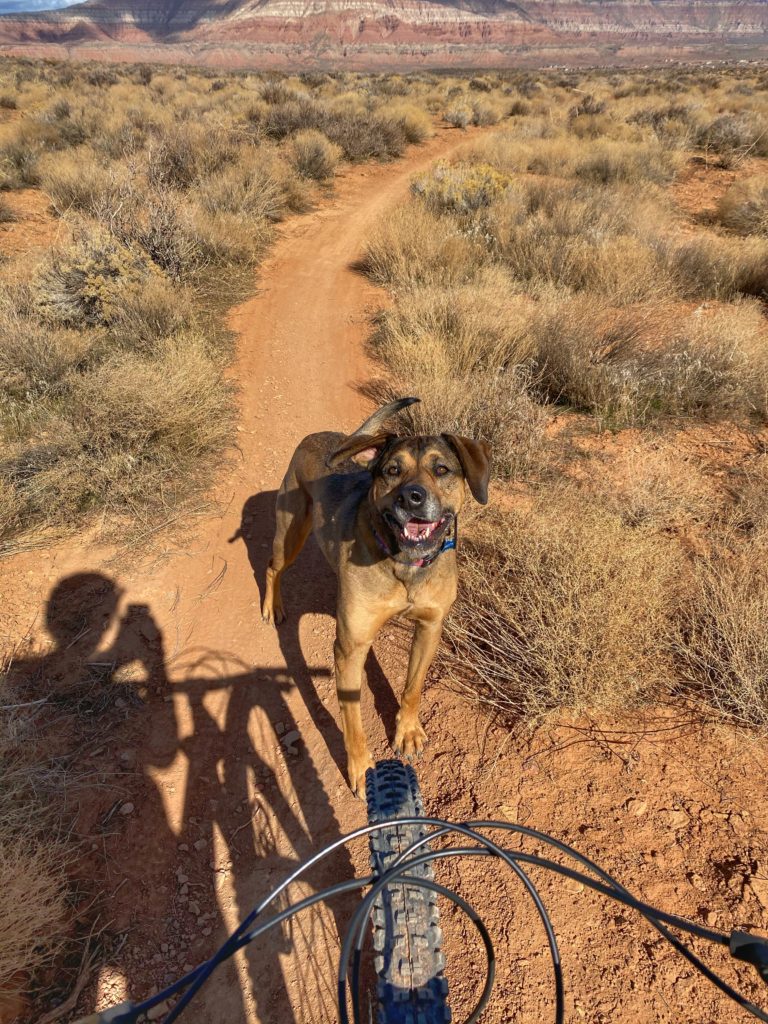
9. Put in the time for training
My best tip for vanlife with a dog is training, training, training. The more well-trained your dog is, the easier vanlife will be for both of you.
I put a lot of time and energy into training with Dakota from the time I brought her home. We did basic obedience at Petsmart and later did e-collar training with a company called Sit Means Sit (they’re located all over the US, I highly recommend them).
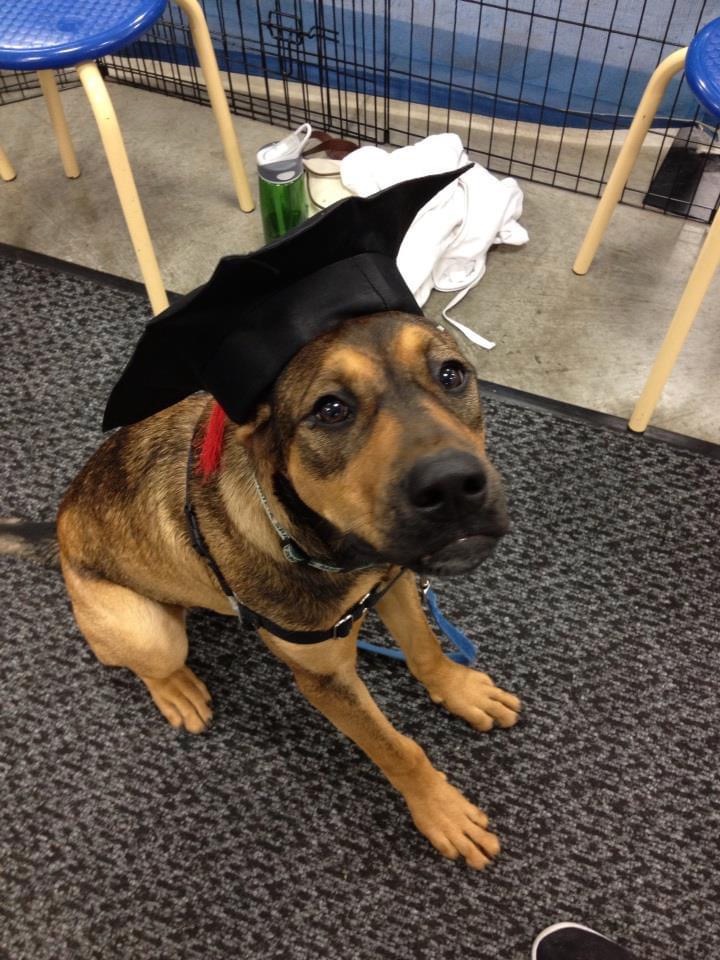
E-collars can stir up many uninvited opinions, but it’s what allows Dakota to have the off-leash privileges that she has. It keeps her safe and gives me the confidence to know that I can get her to drop something or come to me if we have a wildlife encounter or are in a dangerous situation.
If you decide you’d like to look into e-collar training for your dog, I recommend paying a professional to help you learn the basics of using the e-collar.
Even the most well-trained dogs can still have “their thing” that makes them a challenge. Know your dog, learn their behaviors, and don’t set them up for failure.
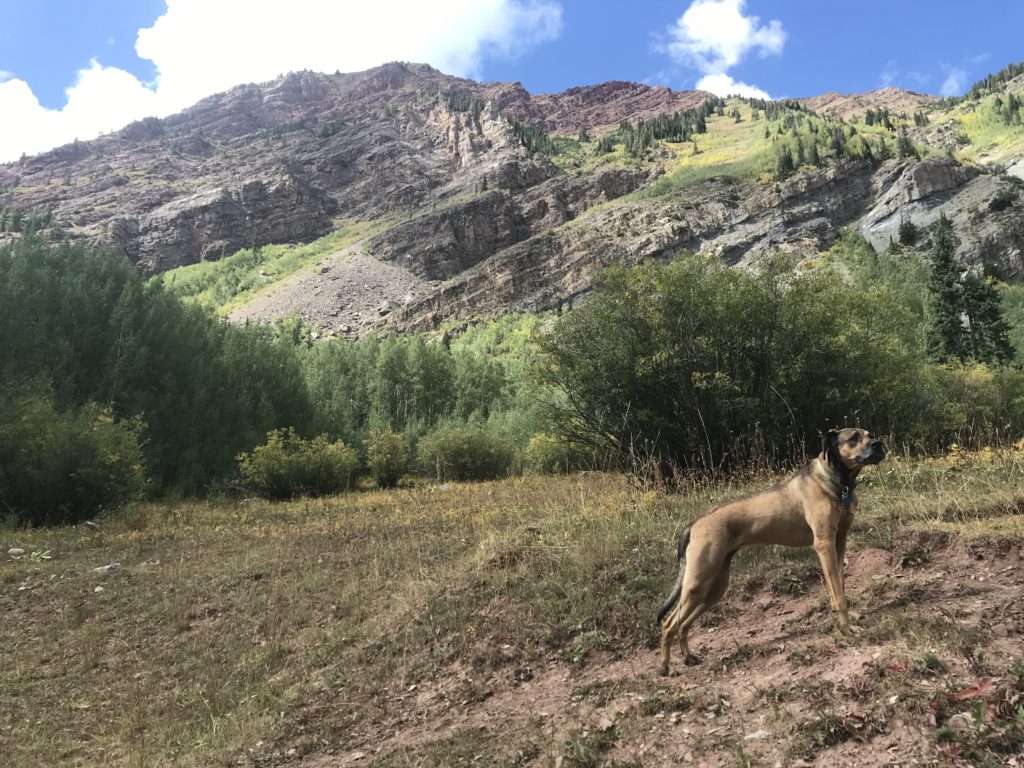
10. The dog comes first
The bottom line for bringing a dog along for the vanlife journey is remembering that your dog must come first.
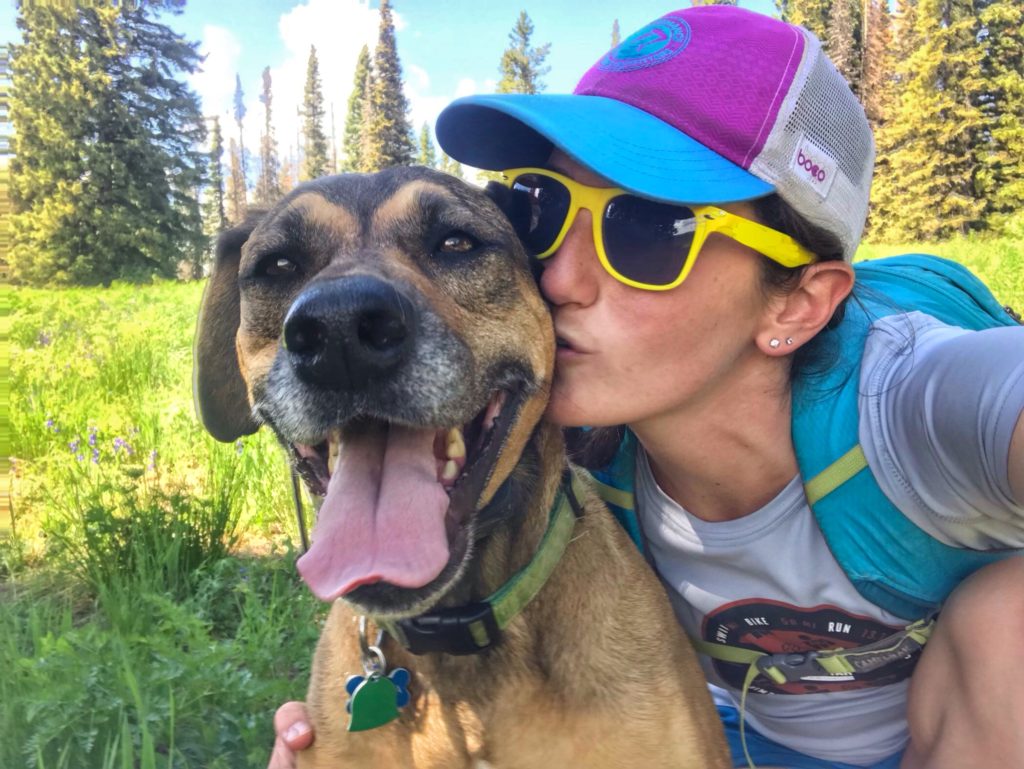
Bringing a dog into your family isn’t a temporary thing. They’re yours through thick and thin. It’s not a responsibility to take lightly.
Living vanlife with a dog comes with a tremendous amount of challenges. Dakota cannot hike on every trail (especially in National Parks), I have to be extra careful about temperatures, and our journey to begin vanlife together was as difficult as it could be.
I have changed plans or skipped traveling to places because of Dakota’s needs. I have cut visits short when the weather got too warm for her and have spent thousands of dollars on emergency vet visits.
Someday, Dakota won’t be able to jump up and down onto the bed anymore and I’ll have a lot to reconsider when that time comes, but reconsidering Dakota will never be an option.
We also had a health scare at the beginning of the summer, which ended up being a false alarm, but was the first time I’ve had to think about being stationary for Dakota’s medical care. That’s something I’d do in an instant if I had to.
I’ll never tell someone not to get a dog for living in a van. Honestly, Dakota has the best life in the whole entire world now that we’re living on the road. Just know that you’re taking a difficult way to live and making it harder, but just because it won’t be easy doesn’t mean it won’t be worth it.

Whether you already have a dog and are dreaming of making the move to vanlife, or you’re looking to add a canine companion to your current vanlife journey, there’s a lot to consider when a pup is involved.
If you’re willing to put in the time, training, and love, I’d say adding a dog to your adventures is absolutely worth it!
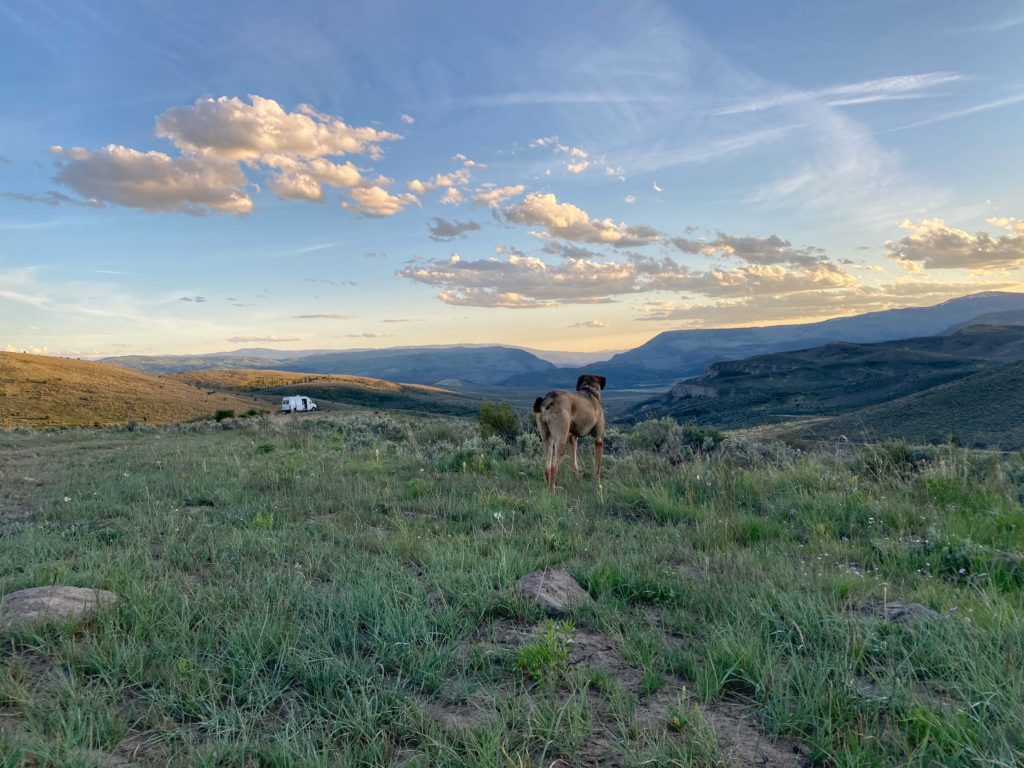
If you found these tips helpful, please share them with a friend or buy me a beer (Venmo @ Jenlev110).
Note: this post contains affiliate links. If you decide to purchase a product that I have linked to, I’ll get a portion of the profits, at no additional cost to you. It’s an easy way to support me while getting great gear for yourself!
